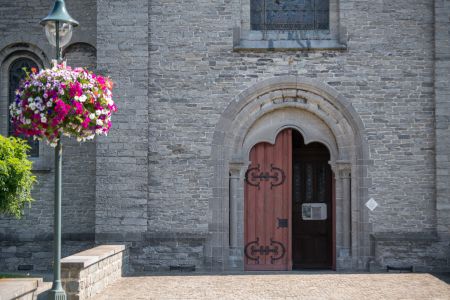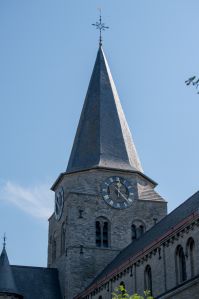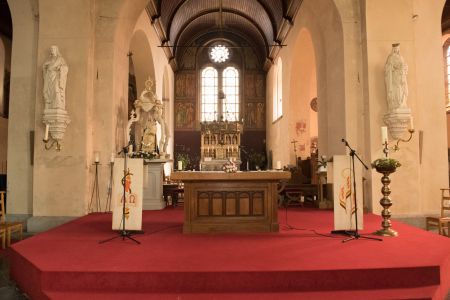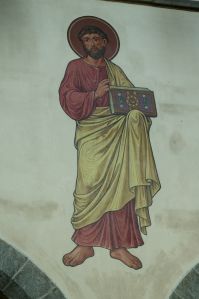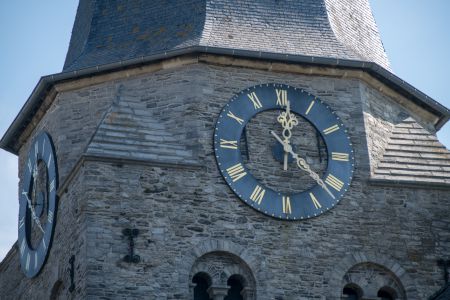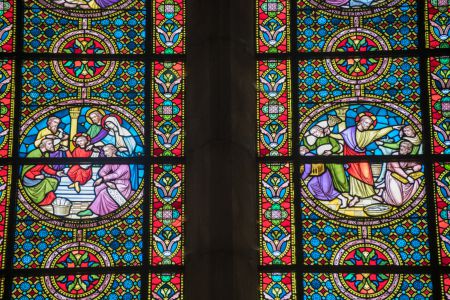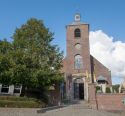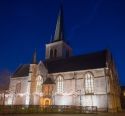Church | XIII/XIX | Neoromanesque | Catholic Church





Map
Opening hours
01 June - 30 September
Mon -
Tue -
Wed -
Thu -
Fri 10.00 - 16.00
Sat 10.00 - 16.00
Sun 10.00 - 16.00
Guided tour
+32 9 383 51 33
Religious offices
Description
In 1889, architect Auguste Van Assche left his mark on the whole. He also designed the altars. The stained glass windows (G. Landon) represent Saint Peter, Saint Urban, and of course Saint Adalard of Corbie. In 1901, the interior was painted in Neo-Gothic style according to plans by Fr. Coppejans. Of these murals, only the apostles remain due to severe damage during the Second World War. In 1980, the rest was unfortunately painted over.
Around the church one can still find the old cemetery. Several 18th century tombstones were incorporated into the walls of the church entrance.
Moreover, spread throughout the village there are fifteen little chapels of the Ommegang. One can find a first chapel near the church, next to the Liberty Tree: a little pier chapel called “The Coronation of the Virgin Mary”.
Visit the website of the village of Zingem to learn all about their churches.
KIKIRPA : Photo-library online
Photos
Remarkable elements
Saint Adelardus
H. Adelardus is the local saint. He was a nephew of Charlemagne and abbot of Corbie (northern France). As a saint he is the patron saint of agriculture and horticulture, which fits in a rural village like Huise.
At the end of the 19th century, the worship of Adelardus experienced a revival. This is how we see his statue outside in the cemetery. In the renovated church we find him on the altar of the south aisle, together with H. Peter and H. Urbanus. Adelardus is always depicted as abbot (with staff and monastery) and as agricultural saint (with sickle).
Our Lady with Child Jesus
The statue of Our Lady with Child Jesus is an expression of the great worship of Mary in this region. It wears beautiful clothes and a silver crown and stands under a canopy. It was probably made in the 18th century. The statue, the clothing and the canopy were beautifully restored in 2013 by a private sponsor.
Main altar with stained-glass windows
The main altar from 1895 is made of painted stone in Romanesque style. Eight church fathers and, on the tabernacle, the four evangelists are depicted. The intention is clear: here the Good News of Christ is proclaimed and explained.
The two high stained-glass windows behind the altar were made by G. Ladon and depict scenes from the life of Christ. At the top is the Ascension (His feet are just visible!).
The murals show mighty angels.
Various tombstones
In the past, notables of the village were buried in the church. From 1800 this was no longer allowed. Some tombstones are embedded in the back of the church wall: you can see Vijvens, Thienpondt and Landrieu mentioned. In front of the northern aisle is the huge brass graveplate of the family della Faille d'Huysse. These barons were the mayors of Huise for 150 years.
Church treasures in display cabinet
No church without church treasures! Here are beautiful chalices and monstrances, partly from the 18th century, made of gilded silver. Special are the silver objects that were donated in the 18th century by the (congregations for) boys and girls of the village, but also by the weavers.
The Schyven organ
The Schyven organ from 1898 is a fine example of the 19th-century symphonic-orchestral romantic style for organs. It was built in Brussels after mediation by Frans-August Gevaert (1828-1908). This famous composer and music theorist was born and raised in Huise, in the house to the right of the church. He also paid for the bass pipes of the organ.



